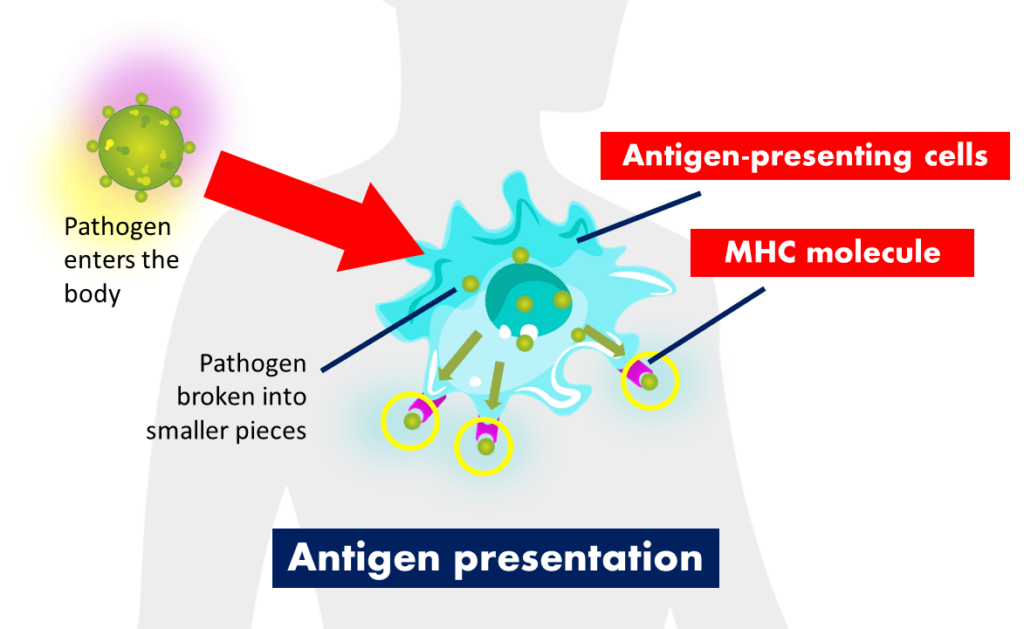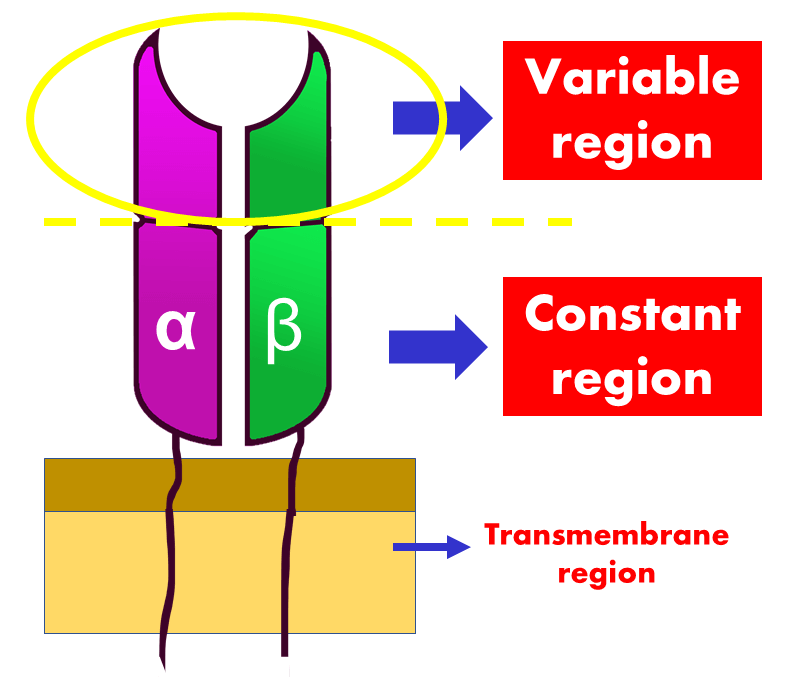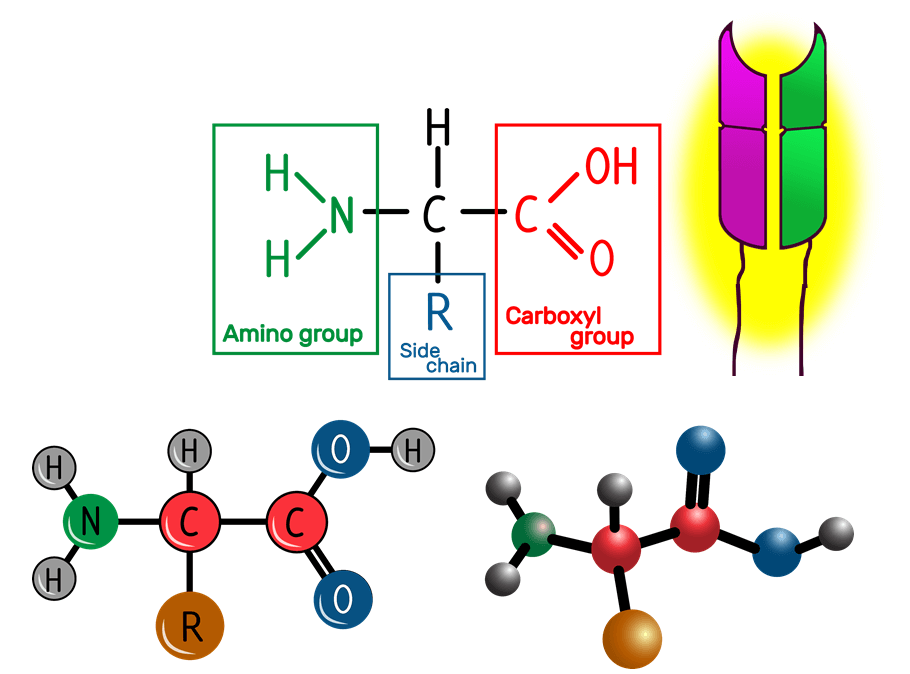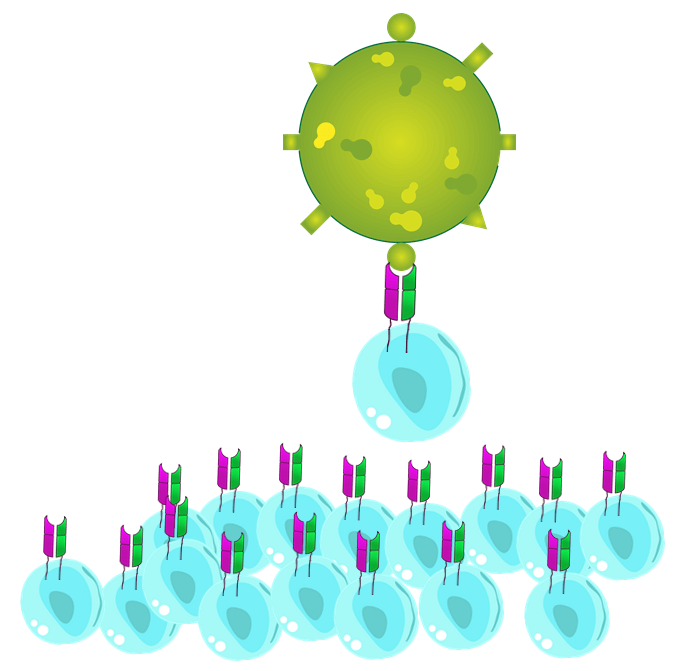Click here to comment on YouTube
What if I told you that there’s one cell in your body that if you don’t have it, you will die? And I’m not saying you might die. I’m telling you that you WILL die if you don’t have it. What is it? Keep reading.
Topic Outline
- Setting the Scene
- The Adaptive Immune Response
- Antigen Recognition and Presentation
- T Cell Receptors
- T Cell Clones
Setting the Scene
Imagine watching a movie where a team of fighters is in a crowded room. There are hundreds, if not thousands of people in that room. Many of the people are good. But some people invade the space – And they’re bad.

The job of these fighters is to find these invaders and kill them. This team of skilled fighters knows that if they don’t get rid of the bad guys, those invaders could kill EVERYONE. These fighters aren’t willing to take that risk.
Fortunately, this team of fighters is highly skilled at detecting bad guys. And as soon as they see a bad guy, they start fighting.
This exact scenario is happening inside our bodies but on a different scale. Our T cells detect foreign invaders with precision.
But before we get to what that cell type is, let’s explore the role they play in your adaptive immune response.
The Adaptive Immune Response
The adaptive immune response is how our bodies can fight off TONS of different pathogens. We have around 100 trillion unique receptors inside us that allow cells to recognize just about every pathogen that exists. And without the ability to recognize and attack so many possible antigens, pathogens can cause a significant amount of harm to our bodies.

This level of specificity is impressive, and our immune response to these pathogens is pretty effective.
But how exactly can our bodies recognize and respond to so many specific pathogens?
Antigen Recognition and Presentation
A foreign antigen enters your body. When this happens, there are antigen-presenting cells that will eat up the antigen through a process called phagocytosis.
The antigen-presenting cells will process that antigen and break it down into smaller pieces using enzymes present inside the cell.

Once the antigen is broken into smaller pieces, it will associate with a molecule called the major histocompatibility complex (MHC). The MHC molecule will then take the pieces of antigen and transport them to the cell’s surface.
This process is called antigen presentation. And this is when these amazing cells spring into action.
The T Cell Receptors
To understand how we can recognize so many antigens (100 trillion receptors) in the world, we need to look at the structure of these receptors.
These receptors are made up of the alpha and beta chains. Each of these chains has two main domains – a constant region domain, which is relatively similar between all of the receptors, and a variable region domain, which is the part that’s furthest from the cell membrane. This part is highly variable. This variability forms the basis for the specificity we find when recognizing antigens.

This receptor is a protein. Proteins are made up of chains of amino acids. If you change the sequence of amino acids in the chain, that affects the protein’s structure and even the function.
The variable regions of these receptors are made up of about 102 to 109 amino acids. That gives us a lot of possible combinations of amino acids. That’s why we’re able to recognize so many different pathogens.

Each T cell has one kind of receptor that recognizes one specific antigen. And the amino acid sequence of that variable region is coded in its DNA. It’s this sequence that determines which antigen it recognizes.
And that’s why the T cell and its receptors are crucial for fighting off foreign invaders. Without these cells, we wouldn’t be able to recognize so many pathogens, and our immune system wouldn’t be able to mount an effective response against them.
T Cell Clones
There are about 100 trillion types of T cell clones in the body. A clone, in this case, is a group of T cells that all have the same antigen receptor. But each clone usually is present in relatively low numbers.
A pathogen can have multiple antigenic parts on its surface. When a pathogen enters the body, the T cells that recognize those antigens will get activated. Once that happens, those clones will replicate, increasing in number to fight against the pathogen. When they are needed, they proliferate and attack.
So as you can see, T cells are essential. And it’s a good thing we have them. Without them, you and I wouldn’t last very long.

